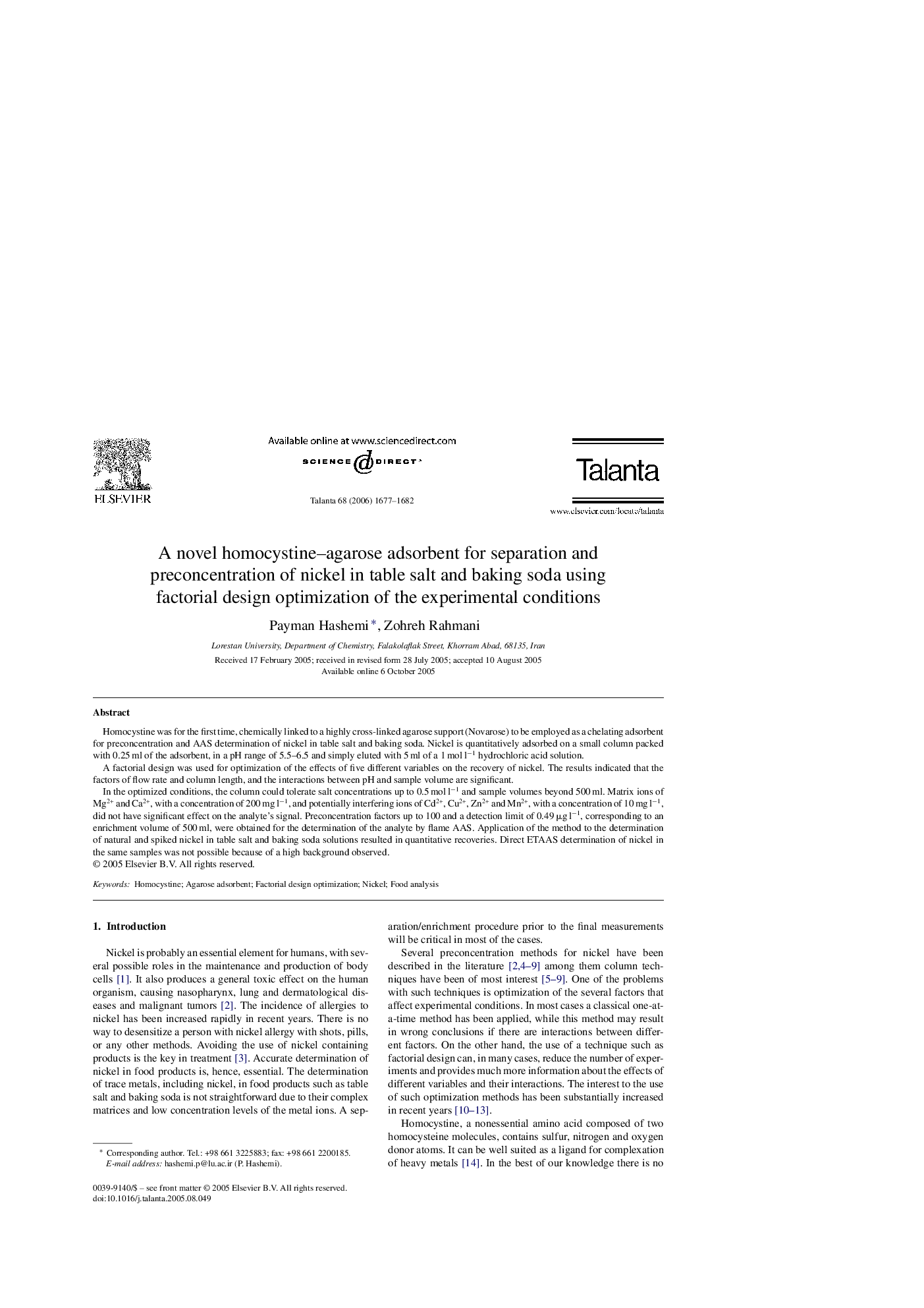| Article ID | Journal | Published Year | Pages | File Type |
|---|---|---|---|---|
| 1246588 | Talanta | 2006 | 6 Pages |
Homocystine was for the first time, chemically linked to a highly cross-linked agarose support (Novarose) to be employed as a chelating adsorbent for preconcentration and AAS determination of nickel in table salt and baking soda. Nickel is quantitatively adsorbed on a small column packed with 0.25 ml of the adsorbent, in a pH range of 5.5–6.5 and simply eluted with 5 ml of a 1 mol l−1 hydrochloric acid solution.A factorial design was used for optimization of the effects of five different variables on the recovery of nickel. The results indicated that the factors of flow rate and column length, and the interactions between pH and sample volume are significant.In the optimized conditions, the column could tolerate salt concentrations up to 0.5 mol l−1 and sample volumes beyond 500 ml. Matrix ions of Mg2+ and Ca2+, with a concentration of 200 mg l−1, and potentially interfering ions of Cd2+, Cu2+, Zn2+ and Mn2+, with a concentration of 10 mg l−1, did not have significant effect on the analyte's signal. Preconcentration factors up to 100 and a detection limit of 0.49 μg l−1, corresponding to an enrichment volume of 500 ml, were obtained for the determination of the analyte by flame AAS. Application of the method to the determination of natural and spiked nickel in table salt and baking soda solutions resulted in quantitative recoveries. Direct ETAAS determination of nickel in the same samples was not possible because of a high background observed.
